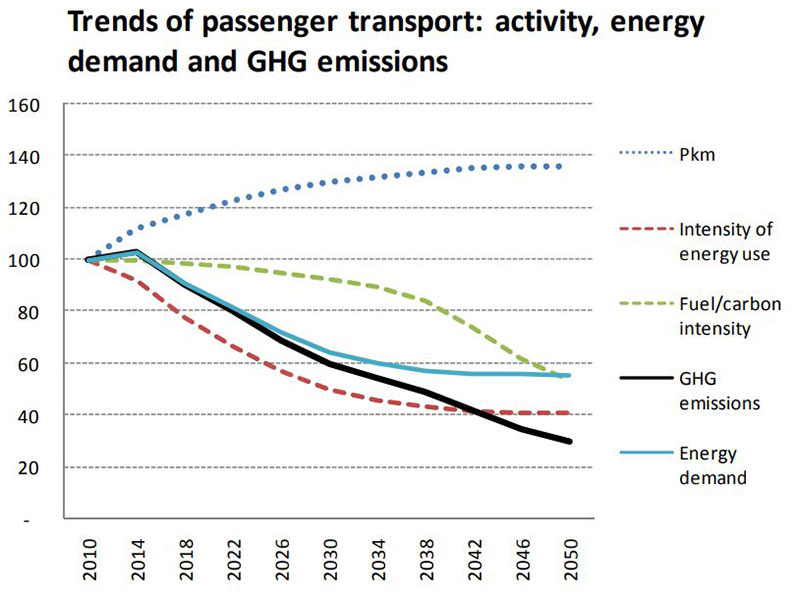GHG-TransPoRD
07.67
From 2009 to 2011
GHG-TransPoRD focused on developing a European strategy to reduce transport-related emissions. TML analysed the reduction potential of vehicle technologies and mobility measures and quantified the impacts of different technology scenarios through TREMOVE simulations.
GHG-TransPoRD was a research project co-funded by the European Commission (FP7). The main goal was to develop a comprehensive European strategy that aligned R&D efforts with other policies. The aim here was to support European targets, in particular the reduction of transport-related emissions, focusing on different transport modes for the periods up to 2020 and up to 2050.
As a starting point for the analysis of measures, we took the targets set for the transport sector (backcasting). GHG-TransPoRD followed two tracks. On the one hand, we described European innovation systems for the transport sector (investments and developments). At the same time, we analysed the reduction potential of different technical measures. These lines were combined in a model comparison of different theoretical technology introductions, which we compared with existing policy measures. This revealed several areas where the full reduction potential has not yet been reached.
GHG-TransPoRD was supported by a team of stakeholders and workshops. We communicated interim findings with stakeholders and actively involved the transport sector in the project. TML was responsible for analysing the reduction potential in transport-related emissions through the introduction of existing and expected vehicle technologies and mobility measures. In addition, TML quantified the effects of different scenarios for technology introductions through the analysis of TREMOVE simulations.
GHG-TransPoRD was a research project co-funded by the European Commission (FP7). The main goal was to develop a comprehensive European strategy that aligned R&D efforts with other policies. The aim here was to support European targets, in particular the reduction of transport-related emissions, focusing on different transport modes for the periods up to 2020 and up to 2050.
As a starting point for the analysis of measures, we took the targets set for the transport sector (backcasting). GHG-TransPoRD followed two tracks. On the one hand, we described European innovation systems for the transport sector (investments and developments). At the same time, we analysed the reduction potential of different technical measures. These lines were combined in a model comparison of different theoretical technology introductions, which we compared with existing policy measures. This revealed several areas where the full reduction potential has not yet been reached.
GHG-TransPoRD was supported by a team of stakeholders and workshops. We communicated interim findings with stakeholders and actively involved the transport sector in the project. TML was responsible for analysing the reduction potential in transport-related emissions through the introduction of existing and expected vehicle technologies and mobility measures. In addition, TML quantified the effects of different scenarios for technology introductions through the analysis of TREMOVE simulations.


